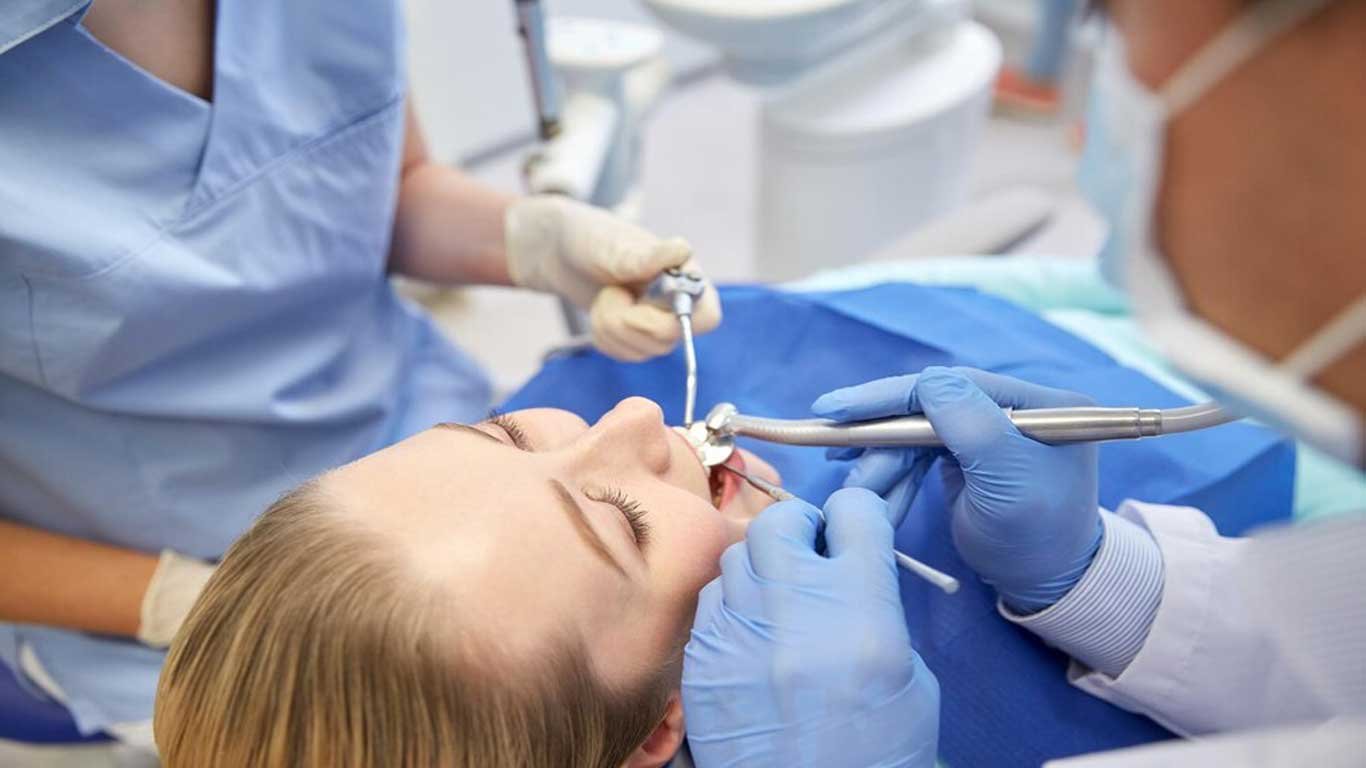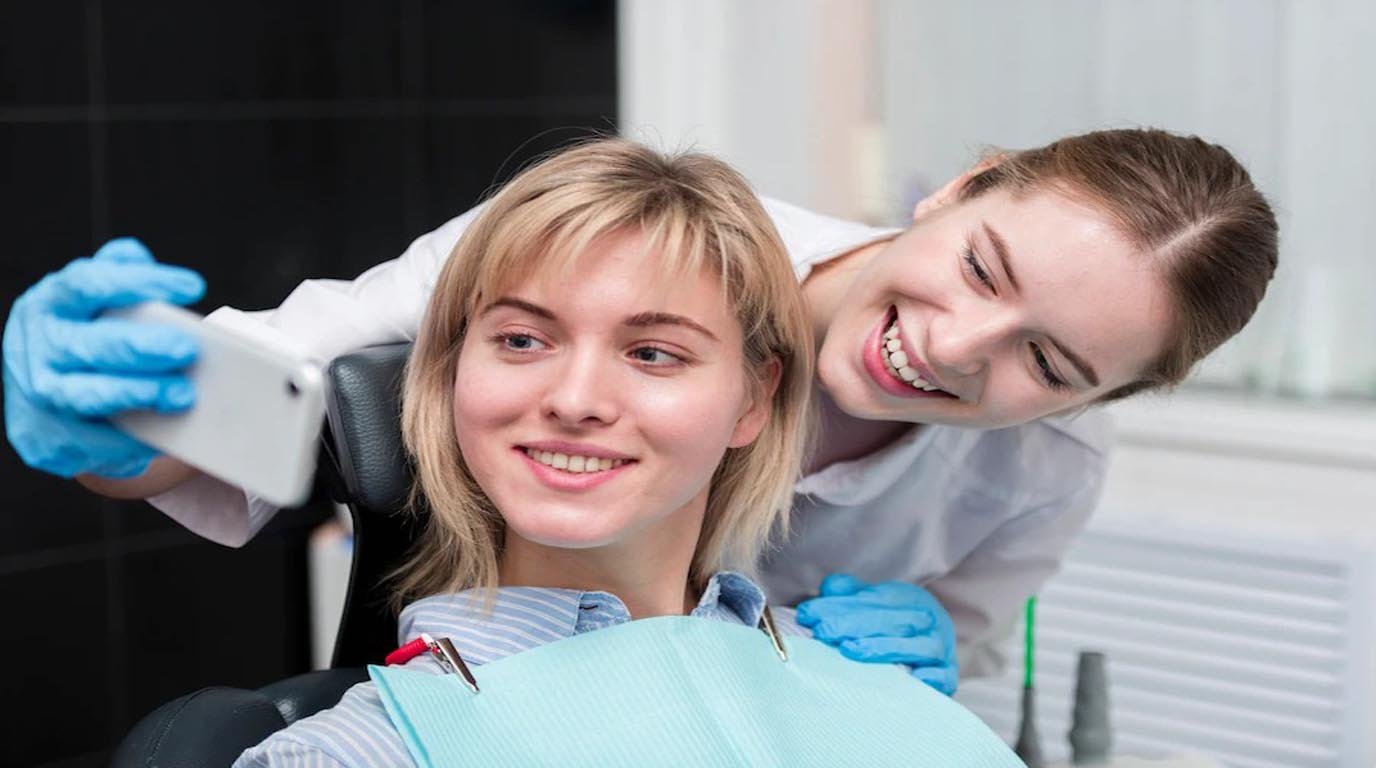Limited Orthodontic Treatment: What Is It?
Limited orthodontic treatment focuses on a few teeth rather than all of the upper and lower teeth together. It is essential because it keeps your oral development on track and benefits your oral health in the long run.
Sometimes, only a specific area of a patient’s mouth has a problem. For example, the patient might need to align their front or molar teeth. In this case, we used limited treatment to address this issue. Generally speaking, the length of treatment may take around three to nine months, with an average of six months.
Dr. Mir can discuss this treatment option with you if it is recommended in your individual case.
Who are the candidates for limited orthodontic treatment?
We use limited orthodontic treatment to correct minor and isolated problems like gaps or crooked teeth in a specific mouth area. This treatment option opened the field of tooth movement for many people who previously had not undergone orthodontic treatment.
This option is more common in people who have already had comprehensive orthodontic treatment and whose teeth have begun to shift back.
Many people of a variety of ages and dental histories are eligible for this conservative therapy. Our most frequent candidates are those who wish to aesthetically improve their smile without making improvements to their bite.

Can I use it?
Not everyone can be a candidate for this treatment type. Your specific situation determines the outcome.
If you suffer from severe crowding, or jaw problems this therapy may not be an option for you. Only aligning a certain portion of your dentition may lead to long term issues such TMD and bite issues. However, several patients have expressed surprise at the results of such a concentrated and straightforward realignment.
A thorough evaluation is needed to see whether you are a good candidate for this therapy. Please keep in mind that this evaluation is complimentary at York Orthodontics.
The benefits of limited orthodontics
- A shorter treatment time than standard Invisalign or braces
- More economical
What is the method?
In most limited orthodontic treatments, we use clear plastic aligners (like Invisalign) or braces for a limited number of teeth. However, in some cases, we might use a retainer.
There are three requirements for minor tooth movement:
- Space: A tooth needs some room to move.
- Force: Pressure should be applied to force a tooth to move in a desired direction.
- Time: A tooth needs at least several weeks to move into the preferred position.
Limited orthodontic treatment costs
The cost highly depends on the nature of the problem and the anticipated time to complete the process. Typically, the cost of this process is less than a comprehensive treatment.
Can we recommend limited orthodontic treatment for a child (aged 6–9)?
We recommend this option for a child aged 6 to 9 when:
- Significant front tooth rotation makes it difficult to straighten them afterward.
- The front teeth are protruding (sticking out), putting them at risk of serious damage.
- Due to the spacing of the front teeth, the nearby permanent tooth won’t erupt.
When is limited orthodontic treatment an elective recommendation (not urgent) for a 6–9-year-old child?
- Minor crowding of the upper or lower front teeth, or perhaps both.
- There are some spaces between the front teeth, yet there is adequate space for all teeth to erupt.
When should we not recommend a limited orthodontic treatment?
- Any bite issues
- An anterior open bite due to thumb sucking, a faulty swallow pattern, or tongue thrusting.
A point:
In many cases, crowded teeth can reveal a hidden issue that needs to be solved collaboratively. Combining interceptive orthodontics and orofacial myology may be the best approach to improving tongue position.
The patients’ musculature can be retained by habit correction appliances together with orofacial myology to replace a bad habit with a new and healthy one.
An assessment with integrative postural therapy is recommended when a bad bite is due to poor posture.
Limited orthodontic treatment code
As we mentioned before, limited orthodontic treatment only treats minor issues. It does not include tooth movement involving the mandibular and maxillary arches as a whole.
Limited vs. comprehensive orthodontic treatment
One of the main reasons patients does not pursue orthodontic treatment is that they believe it is too time-consuming or expensive for them. With new ways to improve your smile, this does not need to be an issue.
At York orthodontics, we are always looking for new ways to make treatment more flexible for our patients by providing them with many options to choose from. This gives our patients the power to create a treatment plan for their needs.
Limited treatment is an option for those looking for a quick and easy way to modify their smiles. Full-comprehensive orthodontic treatment usually takes about 24 months on average, but limited treatment can range between 3 to 9 months.
With the potential cost half the price of full treatment, limited treatment not only saves you time but also money. This option gives patients a chance to have control over their treatment and only target specific areas of their choosing.
Addressing bite issues is a large part of orthodontic treatment, which can add time to your treatment. Due to that, some patients may not be interested in fixing their bite at all. There are no bite corrections, extractions, or rubber bands with limited treatment. Only clear aligners or a few brackets are used for your treatment, allowing you to take charge of it on your own time and avoiding adjustment appointments. You can complete your entire treatment with only a few visits to the office.
Moreover, if you change your mind during or after your treatment, you can upgrade your treatment plan to a full-comprehensive treatment. Although this upgrade will change your treatment plan, time and cost.

When would limited orthodontic treatment be ideal?
Saving time and money is something that all patients take advantage of, but there are also some situations where limited treatment could be helpful.
Limited treatment is ideal if you do not want to change your bite and only want to address minor crowding or spacing of your teeth. Also, it’s not uncommon for someone to want or need tooth alignment more than once in their life. If the patient does not use the retainer as recommended after treatment, their teeth may move back to an undesirable position.
Instead of getting the full treatment again, you can use limited therapy to “touch up” any changes that may have occurred after treatment and “refresh” your smile.
How do I start limited treatment?
Like all orthodontic treatments, your journey starts with a consultation. During this visit, your orthodontist will examine your smile and explain your options.
Please visit our website to learn more about consultation appointments and to schedule a free consultation.

Limited Invisalign treatment
Adults’ desire for aesthetic treatment is increasing. We at York Orthodontics provide the latest treatment options to our patients so they can get their teeth straight without the appearance of braces. Among many options, Invisalign is the most common for mild crowding or spacing. But if you have more severely crooked teeth, you will probably need a full set of Invisalign or traditional braces.
FAQ
What treatment options are included in limited orthodontics?
Without the use of full braces, interceptive orthodontics (limited treatment) can use many treatment options. The primary teeth, jaw, and bite are all targets of the procedure. These options contain:
- Spacers
- Partial braces
- Different oral appliances
- Palatal expanders
Is there a difference between limited and comprehensive orthodontic treatment?
Not all orthodontic treatment is the same. Comprehensive treatment focuses on idealizing the smile, teeth alignment, soft tissue aesthetic, and bite. Limited treatment concentrates only on a few teeth. When it comes to children, comprehensive treatment is more common. In adults, depending on their issues, limited treatment may be a good option for straightening minor crowding.
What is the comprehensive treatment?
Comprehensive treatment is an orthodontic treatment option that is completed in one stage. Treatments like metal & ceramic braces, or Invisalign are all considered comprehensive treatments. Patients often need 18–24 months to complete their treatment.
How long does comprehensive treatment take?
The length of a comprehensive treatment depends on the complexity and severity of your teeth. For example, a significant protruding tooth may take two years to complete. Or if your back teeth are in good condition and your front teeth have minor crowding, you will probably need half that time to complete the treatment.
Typically, children and teenagers are the main targets for this treatment. However, in the last two decades, more adults have been looking for comprehensive orthodontic treatment.
Orthodontic treatment at York orthodontics
At York Orthodontics, we offer the best options that suit your individual concerns. If you’re looking to achieve the smile of your dreams, contact us today and book a complimentary consultation to start your new smile journey!
